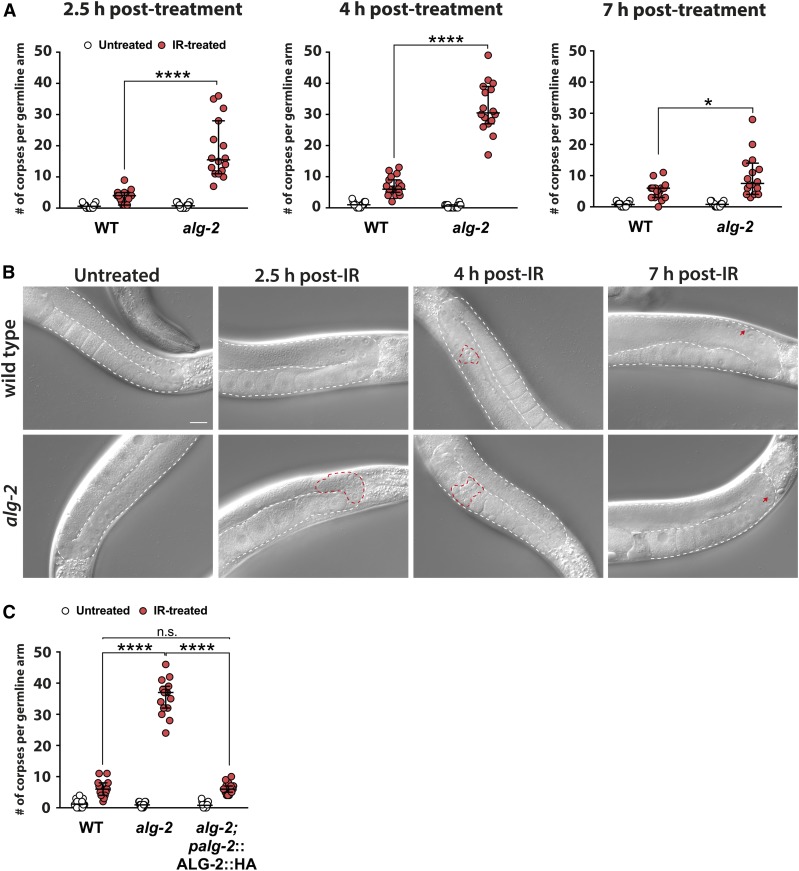Figure 1.
alg-2(ok304) mutants display transiently elevated apoptosis of late-pachytene germ cells upon IR. (A) Quantification of apoptotic corpse numbers revealed elevated germ cell apoptosis in alg-2(ok304) mutant animals following IR treatment (90 Gy) at different time points. (B) Representative DIC images of IR-treated and untreated WT and alg-2(ok304) mutant germlines taken at the indicated time points. Bar, 20 µm. At 2.5 hr post-IR, considerable numbers of early apoptotic corpses were visible in the gonad loops (highlighted by red dashed line) of alg-2(ok304) mutant animals. At 4 hr post-IR, the majority of corpses had evaded engulfment and migrated to the proximal germline (highlighted by red dashed line). After a further 3 hr, the alg-2(ok304) mutant germlines regained a healthy morphology and exhibited only a few apoptotic cells (highlighted by red arrows). (C) An ALG-2::HA transgene fully rescued the alg-2(ok304) mutant apoptosis phenotype. (A and C) Representative graphs of one out of three independent experiments; medians with 95% C.I.s are shown, a minimum of 15 germlines per genotype and condition were scored. **** P < 0.0001 and n.s. = P > 0.05; Mann–Whitney nonparametric test. #, number; IR, ionizing radiation; n.s., not significant; WT, wild-type.

